
WindTunnel test of F-16 Scamp model with laser illuminated smoke cross-sections.
Original:http://grin.hq.nasa.gov/ABSTRACTS/GPN-2000-001935.html
Image Manipulation: Shrunk, and chopped top and bottom. Do you really need to see more of the mounting bracket?
Image Quality: Good
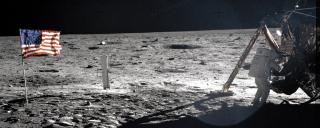
Neil Armstrong during his first EVA on Apollo 11.
Original:http://grin.hq.nasa.gov/ABSTRACTS/GPN-2000-001209.html
Image Manipulation: Shrunk, cropped top and bottom
Image Quality: Good, somewhat grainy in portions
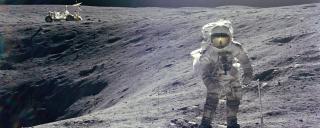
Charles M. Duke on the rim of Plum crater, Apollo 16
Original:http://grin.hq.nasa.gov/ABSTRACTS/GPN-2000-001132.html
Image Manipulation: Shrunk, cropped top and bottom. A colorful camera lens effect was lost from the top.
Image Quality: Adequate (could be sharper)
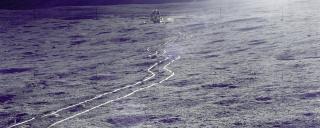
LRV tire tracks leading to the Lunar Module, Apollo 14. This is one of my favorite Apollo photographs.
Original:http://grin.hq.nasa.gov/ABSTRACTS/GPN-2000-001145.html
Image Manipulation: Shrunk, cropped top and bottom. A big sunburst in the upper right was cropped out. This picture was better before I cropped it, but it's still good. Unfortunately it doesn't split well across two monitors, the LM gets broken apart as do the tracks.
Image Quality: Grainy
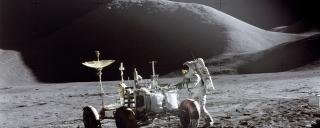
James B. Irwin next to the LRV in front of Mount Hadley, Apollo 15
Original:http://grin.hq.nasa.gov/ABSTRACTS/GPN-2000-001117.html
Image Manipulation: The image lost something in cropping. I compromised and chopped both the top of the mountain and the bottom of the LRV. There is also a good shadow below the LRV that had to be cropped.
Image Quality: Good, except mountains are grainy
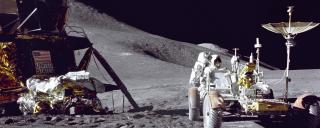
James B. Irwin loads equipment from the Lunar Module into the LRV; Apollo 15.
Original:http://grin.hq.nasa.gov/ABSTRACTS/GPN-2000-001140.html
Image Manipulation: Shrunk and chopped top and bottom.
Image Quality: Very Good (for an Apollo photo)
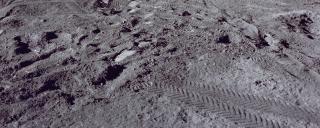
Trampled lunar soil trimmed from the bottom of the previous image. This makes for a backdrop thats less like a photo and more like a texture.
Original:http://grin.hq.nasa.gov/ABSTRACTS/GPN-2000-001140.html
Image Manipulation: Shrunk, and cropped most of the top, and a bit of the bottom.
Image Quality: Good

David R. Scott and the LRV during Apollo 15 moonwalk.
Original:http://grin.hq.nasa.gov/ABSTRACTS/GPN-2000-001116.html
Image Manipulation: Shrunk, cropped top and bottom
Image Quality: Adequate, but very washed out and fuzzy.
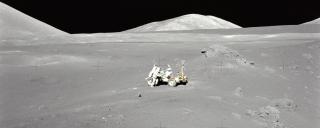
Harrison H. Schmitt at Lunar Roving Vehicle (LRV), Apollo 17
Original:http://grin.hq.nasa.gov/ABSTRACTS/GPN-2000-001149.html
Image Manipulation: Shrunk and cropped space on top, moonscape on bottom. Cropping decreases emphasis on the Lunar expanse of rock and dust. Doesn't split well across two monitors.
Image Quality: Good, could use more contrast.

The top half of the image is from Mars Pathfinder, and the bottom half is the first ever photo from the surface of Mars, taken by Viking 1.
Original (top):http://grin.hq.nasa.gov/ABSTRACTS/GPN-2000-000461.html
Original (bottom):http://grin.hq.nasa.gov/ABSTRACTS/GPN-2000-001699.html
Image Manipulation: Just shrunk to fit, nothing was cropped.
Image Quality: Top half, excellent; bottom half adequate.
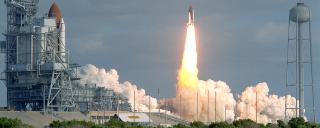
Space Shuttle Columbia waits its turn while Discovery lifts off on mission STS-31.
Original:http://grin.hq.nasa.gov/ABSTRACTS/GPN-2000-000684.html
Image Manipulation: Shrunk and cropped top and bottom. The top of the closer launch pad is lost; so are trees and water at the bottom.
Image Quality: Adequate, somewhat grainy, many scratches and flaws from scanned photograph.

Atlantis lift-off for STS-66.
Original:http://grin.hq.nasa.gov/ABSTRACTS/GPN-2000-000763.html
Image Manipulation: This image lost the best part off of the bottom. There is a huge flock of birds in the water, all scattering because of the launch. But cropping with the birds in looked bad to me -- most of the shuttle was missing. The shuttle and the solid rocket booster are neatly bisected by the two monitors, which works well, IMHO.
Image Quality: Adequate, scratches and flaws from scanned photograph.

Mark C. Lee tests Simplified Aid for EVA Rescue (SAFER) system, during shuttle flight STS-64.
Original:http://grin.hq.nasa.gov/ABSTRACTS/GPN-2000-001056.html
Image Manipulation: Shrunk and chopped the bottom.
Image Quality: Very Good
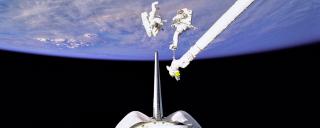
Astronauts Carl J. Meade and Mark C. Lee (red strip on suit) test the new Simplified Aid for EVA Rescue (SAFER) system some 130 nautical miles above Earth.
Original:http://grin.hq.nasa.gov/ABSTRACTS/GPN-2000-001077.html
Image Manipulation: Shrunk, cropped top and bottom. Lost some clouds on top, and most of the shuttle on the bottom.
Image Quality: Very Good

Montage of three Hubble images showing NGC 2207 colliding with IC 2163. Am I crazy, or is this staring at me?
Original:http://grin.hq.nasa.gov/ABSTRACTS/GPN-2000-000897.html
Image Manipulation: Shrunk, cropped top and bottom.
Image Quality: Very Good
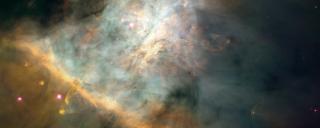
Gorgeous, very high resolution montage of 15 Hubble images of the Orion Nebula.
Original:http://grin.hq.nasa.gov/ABSTRACTS/GPN-2000-000983.html
Image Manipulation: Shrunk, cropped top and bottom. This whole image is great, I picked a strip across that middle that I thought had the most interesting features.
Image Quality: Outstanding
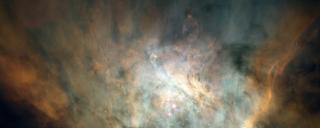
Another Take on the previous image. This one seems to have better composition, and somehow the top looks like it belongs at the top (even though there is no "up" in space).
Original:http://grin.hq.nasa.gov/ABSTRACTS/GPN-2000-000983.html
Image Manipulation: Rotated, shrunk, cropped top and bottom.
Image Quality: Outstanding

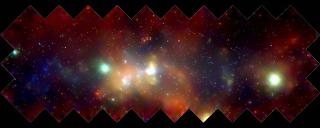
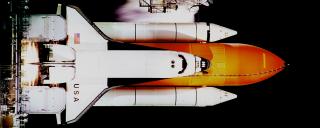
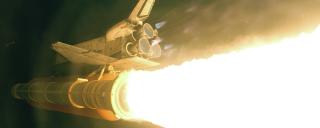
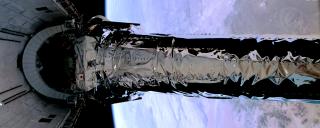
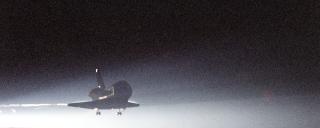
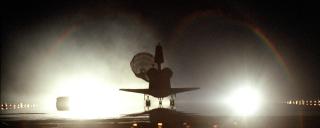
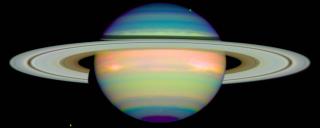

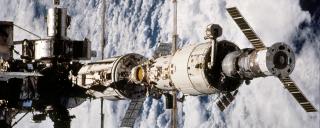

 Fine's Home
Fine's Home